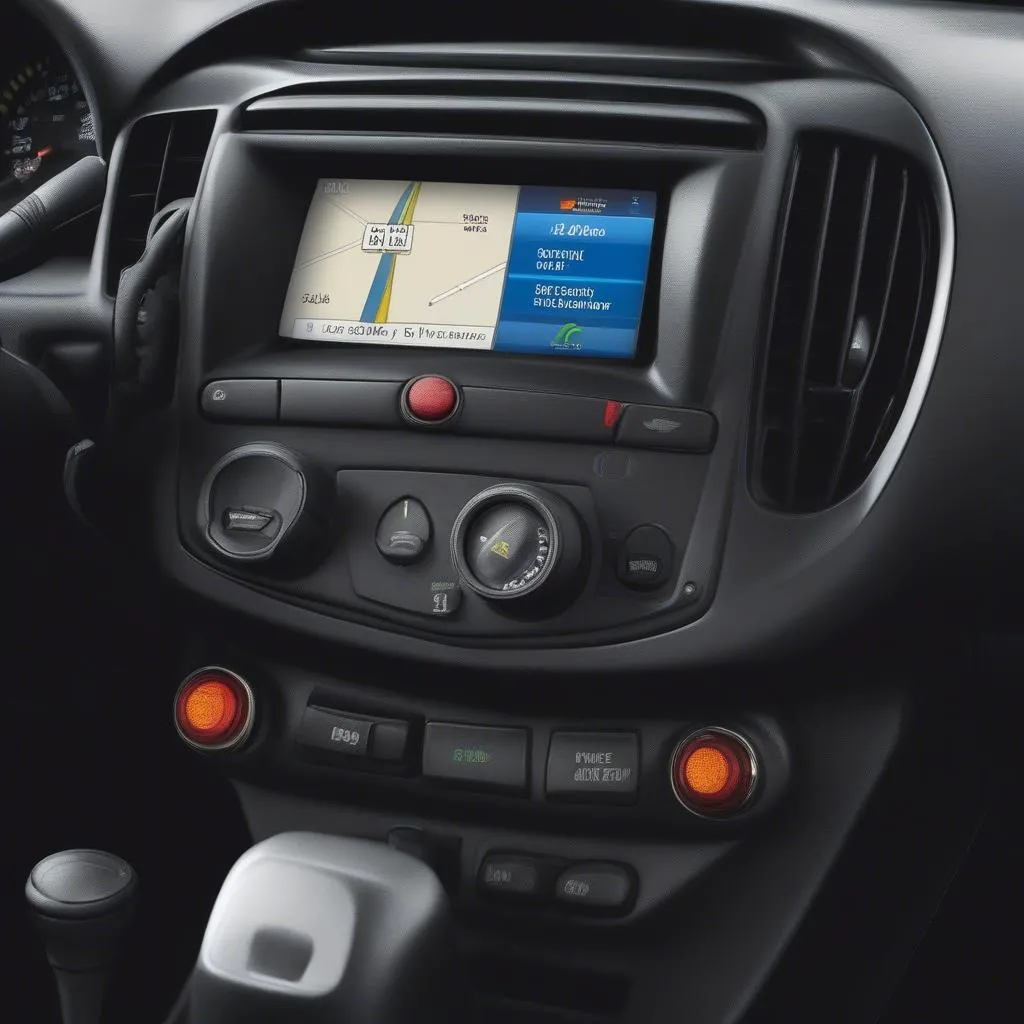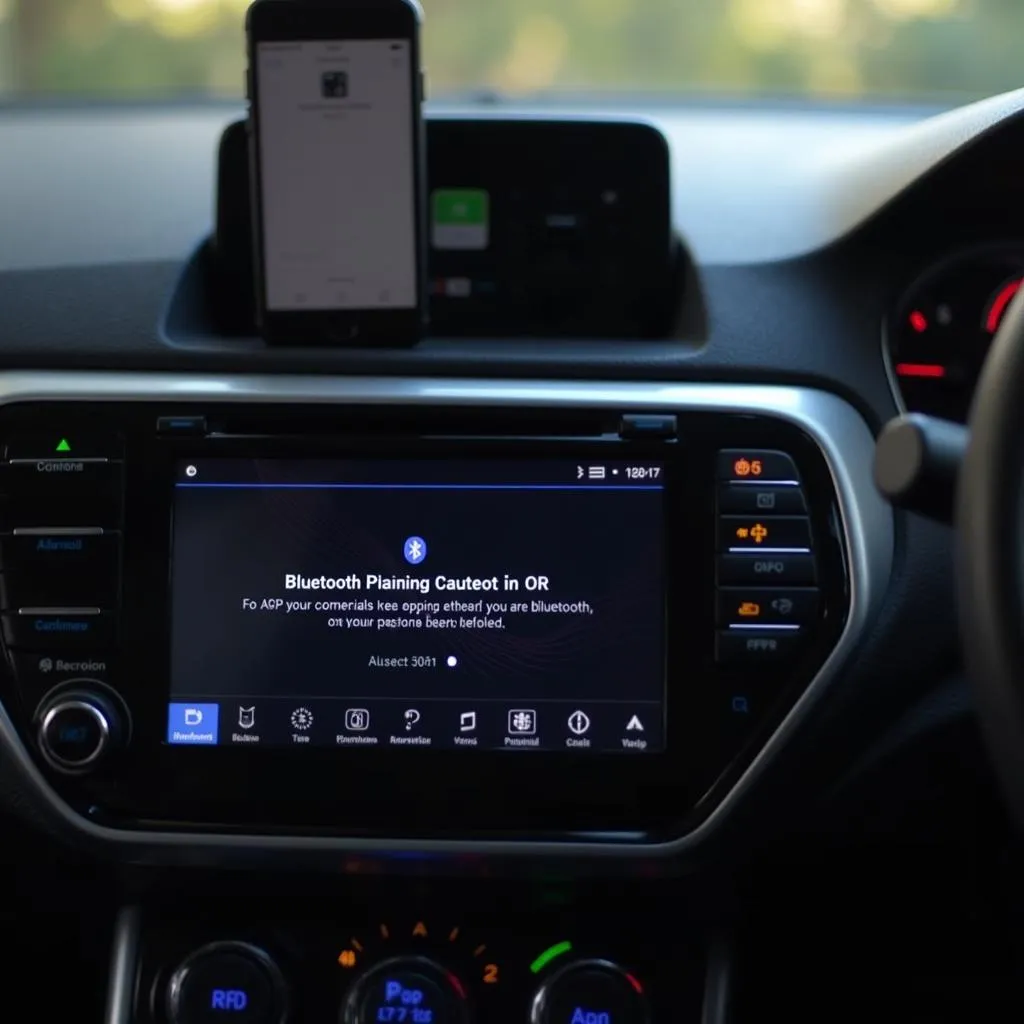The dreaded brake warning light on your 2003 GMC Sierra dashboard can send shivers down any driver’s spine. While it could signal a minor issue, ignoring it could lead to dangerous driving conditions. This comprehensive guide will delve into the common brake warning causes in a 2003 GMC Sierra and provide you with actionable steps to troubleshoot them effectively.
Understanding Your 2003 GMC Sierra Brake System
Before we dive into troubleshooting, it’s essential to grasp the basics of your truck’s braking system. The 2003 GMC Sierra typically features a four-wheel disc brake system with an anti-lock braking system (ABS). The brake warning light is your vehicle’s way of communicating a potential problem within this intricate system.
Common Causes of Brake Warnings in a 2003 GMC Sierra
Several factors can trigger the brake warning light in your 2003 GMC Sierra. Let’s explore some of the most prevalent culprits:
1. Low Brake Fluid Level
One of the most common and easily resolvable causes is a low brake fluid level. Brake fluid is the lifeblood of your braking system, transmitting the force from your foot on the pedal to the brake calipers.
Troubleshooting Tip:
- Park your vehicle on a level surface.
- Locate the brake fluid reservoir under the hood (usually a translucent plastic container).
- Check the fluid level against the “Min” and “Max” markings. If it’s low, add the recommended brake fluid type for your 2003 GMC Sierra (refer to your owner’s manual).
Expert Insight:
“Never underestimate the importance of regular brake fluid checks. As brake pads wear down, the fluid level naturally drops. A consistently low fluid level could indicate a leak, requiring immediate professional attention.” – Mark Stevenson, ASE Certified Master Technician
2. Worn Brake Pads
Brake pads are designed to wear down over time with friction. When they reach a certain thinness, the brake pad wear sensor will trigger the warning light.
Troubleshooting Tip:
- Inspect your brake pads visually by looking through the spaces between the wheel spokes.
- If you see less than ¼ inch of brake pad material remaining, it’s time for a replacement.
Expert Insight:
“Don’t wait for the screeching sound of metal on metal before replacing your brake pads. Ignoring the warning light and driving with worn-out pads can damage your rotors and lead to costly repairs.” – Jessica Carter, Certified Automotive Instructor
3. Malfunctioning ABS System
The anti-lock braking system (ABS) plays a vital role in preventing wheel lockup during hard braking. A malfunctioning ABS module, wheel speed sensors, or related wiring can trigger the brake warning light.
Troubleshooting Tip:
- If the ABS light is also illuminated alongside the brake warning light, it’s highly likely an ABS issue.
- Diagnosing and repairing ABS problems often requires specialized tools and expertise.
- It’s recommended to consult a qualified mechanic or visit a dealership for diagnosis and repair.
4. Brake Line Issues
Brake lines carry the crucial brake fluid from the master cylinder to the wheels. Leaks, corrosion, or damage to these lines can result in a loss of brake pressure and trigger the warning light.
Troubleshooting Tip:
- Inspect your brake lines for any signs of leaks, cracks, or damage.
- Look for wet spots or puddles of brake fluid near the wheels or under the vehicle.
- Repairing brake lines often requires professional assistance due to the specialized tools and safety precautions involved.
5. Faulty Brake Light Switch
While it may seem unrelated, a faulty brake light switch can sometimes cause the brake warning light to illuminate. This switch is responsible for activating your brake lights when you press the pedal.
Troubleshooting Tip:
- If your brake lights aren’t working correctly in conjunction with the brake warning light, the brake light switch is a likely suspect.
- Replacing this switch is a relatively straightforward repair that can be done by a mechanic or a DIY enthusiast with some mechanical experience.
Conclusion
Addressing brake warnings in your 2003 GMC Sierra should always be a top priority. While some issues can be resolved with simple DIY checks and fixes, others demand professional attention. By understanding the common causes outlined in this guide, you’ll be better equipped to diagnose the problem and seek the appropriate solution, ensuring your safety and the optimal performance of your vehicle. Remember, when it comes to brakes, it’s always better to err on the side of caution and consult a professional when in doubt.


